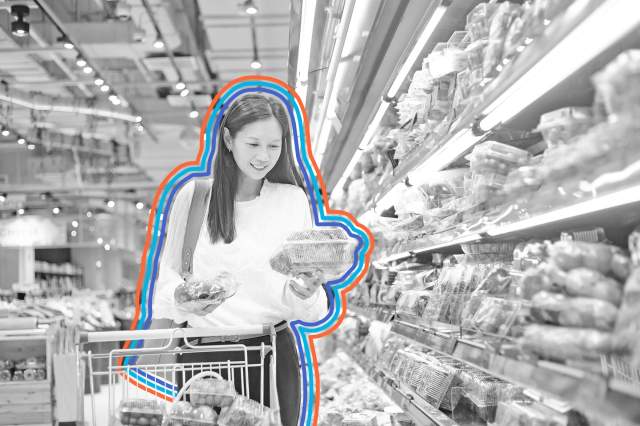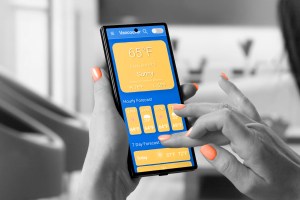
Claw Games Aren’t Just Rigged — They’re Adjustable
If you’ve ever gotten a toy out of one of those coin-operated claw games, good for you! It’s rigged to be a lot harder than it looks. The machine is designed to have a strong grip for only part of the time, so that moment of joy when the claw hooks onto your favorite plush, immediately followed by the disappointment when it doesn’t actually lift it, is absolutely by design — and the machine’s owner can actually adjust the claw’s strength and how often it drops the prize. In one popular machine, they can even input their desired profit level and have the machine adjust automatically.

Sometimes the Grocery Store Brand Is the Same as the Name Brand
There isn’t a single factory that makes every Trader Joe’s or Kirkland Signature product. They typically come from a third-party vendor before the label gets slapped on. These products made by one company and branded by another are called private label products.
Sometimes, store brand products are made by companies that mostly make store brands, but sometimes, they come from more expensive name brands, or from suppliers that also supply name brands.
Wonderful Pistachios and Trader Joe’s pistachios have come from the same place. Naked Juice has supplied the chain with some of its smoothies, too. Duracell makes Kirkland Signature batteries. Kirkland Signature diapers come from the maker of Huggies. Trader Joe’s and Kirkland Signature bourbon has ties to some highfalutin whiskey brands, too. Dole supplies salads and vegetables to Walmart, Kroger, and H-E-B, although Kroger does make around 40% of its own generic products. Sometimes grocery brands even make things for their competitors, like Safeway-owned Lucerne, which makes dairy products for other chains.

Different Brands Sell the Exact Same Furniture at Different Prices
White label products are similar to private label products, but with one key difference: White label stuff comes already fully made and ready for distribution with little to no customization. This is especially common in online furniture sales. It’s why you’ll see different names and different prices for the exact same product on Wayfair, Amazon, Target, and other retailers — even more expensive places like Urban Outfitters and Pottery Barn. Usually these products are sold using the same stock image, so even though they have different names, you can comparison shop using a reverse image search. Services such as Spoken are also trying to streamline that process.
More Interesting Reads

Hotel Bedding Doesn’t Always Get Cleaned
You’ll find plenty of anecdotes online from hotel employees about bedding left unchanged, particularly blankets — and unfortunately, there’s reporting to back it up. In 2016, Inside Edition checked into nine hotel rooms, wrote messages readable by UV light on the bedding, then checked into the same rooms the next day under different names. In three of them, at least some of the bedding hadn’t been changed. They repeated the experiment a few years later at the height of the COVID-19 pandemic and again found marked bedding in three hotels, including one that went for $600 a night.

Vendors Charge More for Weddings, but Sometimes They Have a Good Reason
It’s a pretty open industry secret that hospitality vendors such as party planners, photographers, and caterers charge more for weddings, which is sometimes known as the “wedding tax.” It’s an overwhelming event to plan and, because it ideally only happens once in your life, it’s hard to get a handle on what a good deal is.
But if you end up paying a vendor more than what you’d pay them for a family reunion, you didn’t get hosed. Special wedding rates exist not to scam clients, but because weddings are more hands-on than other events (sometimes called “high touch”), with extremely high stakes.
Your best bet isn’t necessarily to find the cheapest vendor or avoid wedding prices — but you’ll want to find businesses with transparent pricing so you don’t get any surprises down the line.

Some Clothing Is Made to Go Directly to Outlets
When you shop at an outlet store or a discount retailer like Marshalls or Ross, it can feel like you’re getting a great deal on name brands — but that’s not always the case, even when a label is genuine. Fashion companies actually make lower-quality lines that go directly to outlets and discount stores without hitting the regular racks first. They could be made of lower-quality fabric, have different embellishments, or be manufactured more cheaply.
Sometimes, retailers even make up the full price that ends up on the tag as a comparison so it looks like you’re saving a ton. This goes for both mid-tier brands like Gap and designer labels like Coach. It doesn’t apply to everything and every outlet store, but it’s an extremely common practice, so pay close attention to make sure you’re actually getting the deal you want.

Entertainment Studios Have Departments to Enforce Moral and Legal Standards
Behind the scenes, one of the biggest influencers of what you see on your TV are Standards and Practices (S&P) departments, which review content for its moral and ethical aspects, as well as legal liabilities.
Sometimes this is pretty straightforward; Telemundo, for example, has a rule that protagonists in children’s programming need to be following general safety guidelines like wearing seat belts. But sometimes these departments demand revisions that seem strange or arbitrary. A character in one Cartoon Network show was allowed to ride on the hood of a car as long as he was shown wearing a seat belt. One storyboard artist tweeted that she’d been asked to change finger guns to just pointing fingers. The Disney film Lilo & Stitch originally had a main character hiding in a dryer in the theatrical and first DVD releases, but the dryer was altered to a shelf and a pizza box in later versions.











